EXPERIENCE ENCANVAS IN 60-MINUTES!
We're always happy to walk you through Encanvas no matter where you are in the world.

Most enterprises today operate more than 80 SaaS apps, the consequence being ‘data sense’ is harder. The good news is that you can use a no-code aPaaS platform to bridge across enterprise silos to tame data spaghetti and create a single version of the truth

When the possibility of Software-as-a-Service (SaaS) solutions arrived into the market in the early 2000s — heralded in by the evolution of web platforms and cloud computing — they were game-changing for innovators in the tech industry.
Through cloud SaaS innovations, developers could bring their products to market faster (and eat much lower costs), focus on very tight niche solutions, offer products on a subscription, and give customers the opportunity to try them out immediately. Furthermore, technical support and endorsements could be supplied through the same online site that sold the products.
For buyers, SaaS was equally advantageous. No longer did they need to commit to a purchase before experiencing a product to see if it delivered value. The quality of products leaped up the scale, as providers HAD to deliver excellent quality, intuitive, and responsive applications.
The downside of SaaS is that it spreads your data across a wide number of data silos.
Enterprise computing practitioners were somewhat less thrilled by SaaS. Before its arrival, the role of the Enterprise CTO was unquestioned. They were the gods of technology, and nobody could get anything done in IT without their blessing.
The idea that departmental managers could arrive at the IT desk and start demanding software products they hadn’t even seen before, and show them immediate advantages was hard to counter, and left many IT heads on the back foot, trying to defend the common sense of requiring testing, integration and further validation before any recommendation was adopted.

The rise of SaaS adoption levels in the enterprise has soared over two decades, as department heads have got ever more involved in selection decisions on the tools they, and their teams, want to use. The power to make decisions drifted from the center of the enterprise to the margins.
Few could argue that the quality of applications used in business has benefited from SaaS. But at what cost?
Step into any large enterprise and you’ll encounter find the common problem of data held in various SaaS platforms with departmental managers pulling their hair out trying to gather it up to drive decisioning.
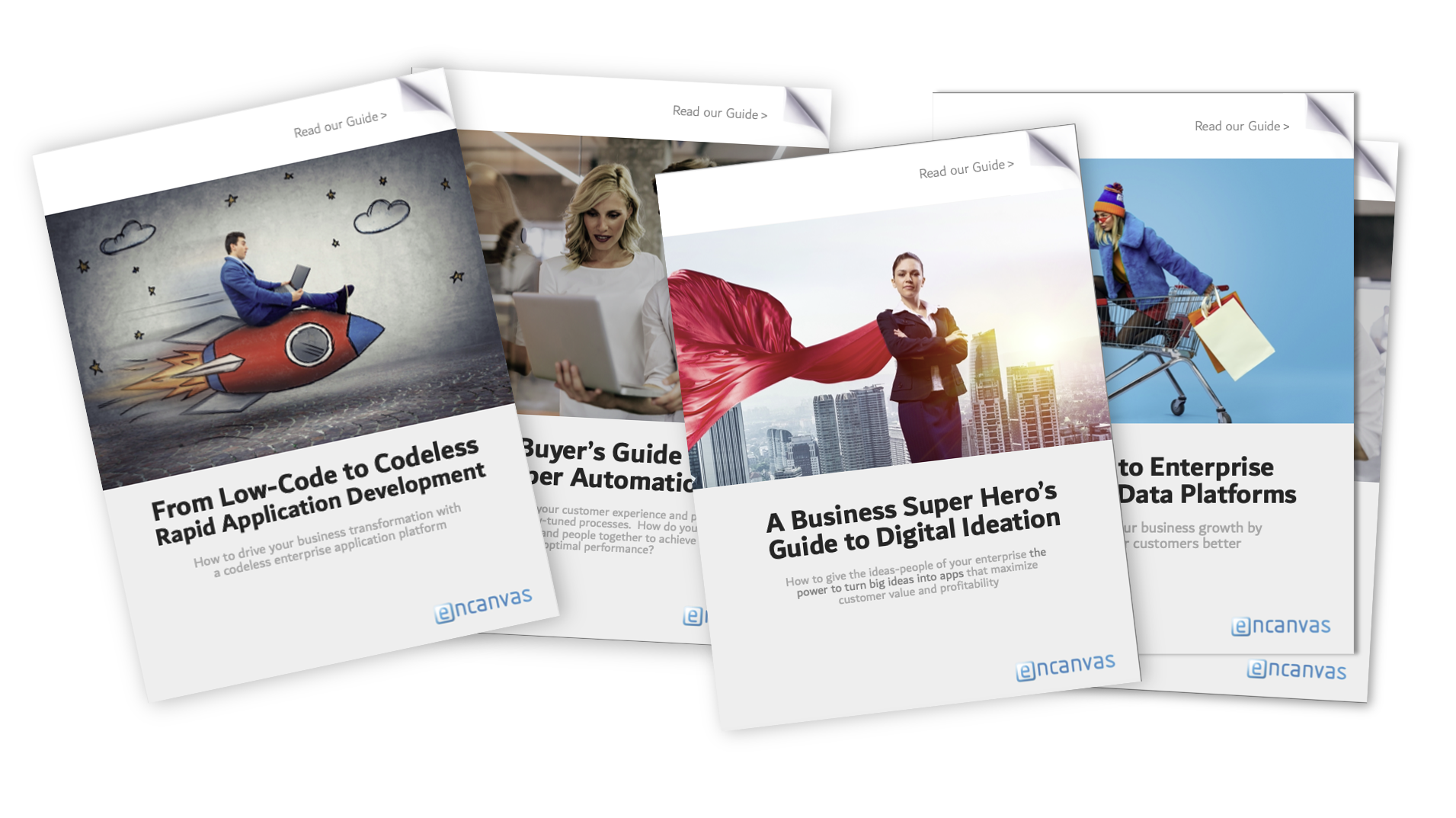
Guide to Digital Transformation
Guide to Hyper Automation
Guide to Digital Ideation
Guide to Customer Data Platforms
Guide to No-Code Platforms
Software-as-a-Service technology has played its part in making it close to impossible for real-time business decisioning to happen across the enterprise without an additional layer of ‘business intelligence and analytics’ technology being superimposed.
Even with the best data visualization and analytical tools, the problem of fragmented data silos pervades.
It’s not simply the case that SaaS tools separate usage activity into different places across the enterprise computing biosphere, using a myriad of separately authored apps results in every app using its own core data tables for common things that every organization needs to know about — such as people, departments, organizational hierarchies, policies, processes, suppliers and user groups. While some of these building blocks can be inherited from common directories, most are simply individually reproduced time and again by vendors.
Growing demand from department leaders and executives for new apps and real-time data analytics has created a demand for data reuse. And it’s when these requests emerge that the problems of data integrity and quality emerge.
Install any new digital innovation into an enterprise, and it’s almost inevitable that existing data will want to be harnessed.
When this happens, time and again, one finds that the original data tables operating within SaaS applications are incomplete, unused, or irrelevant. Business Analysts find themselves scratching their heads trying to work out which bits of data to string together to build a reliable picture of the operating reality.
Businesses want to be ‘digital’ but lack the quality and integrity of data to innovate.
It begs the question: Is there a better way? The answer is yes — and it’s been around for a while.
Secure&Live – A feature rich and data secure digital transformation platform. Secure and Live is a codeless Enterprise applications Platform-as-a-Service (aPaaS), built to turn business models and strategies into apps.
GlueWare – Enterprise iPaaS for bringing your data together, mashing it up, and bridging between your eCommerce store and back-office, streamlining processes for maximum results.
AppFabric – Build as many apps as you need using an agile codeless SDLC approach and change them as often as you like.
Live Wireframe – Design and publish ebooks, courseware and apps, then go live in two clicks!
CDP – Codeless Customer Data Platform to create a single view of your customer data. Use our data integration tools to harvest insights from across your enterprise and beyond.

Learn about the data safeguarding, features and modules of Encanvas that make it a leader in codeless enterprise aPaaS
The concept of cloud Platform-as-a-Service solutions has been buzzing around for over a decade since the arrival of cloud computing. PaaS describes the layer of technology that sits between Software-as-a-Service and the mechanical end of cloud–hardware infrastructure, memory disks and the like.
A no-code application PaaS is an environment for designing, deploying and operating tens — if not hundreds — of apps and software robots without needing to use code to design, deploy, and run them.
Using no-code-aPaaS means that Business Analysts found within IT or Digital teams (not coders) author applications. They do so working in consort with business stakeholders in what Gartner fashionably calls ‘fusion teams.’
Applications requirements go straight from the workshop whiteboard into a live wireframe that swiftly becomes a new application.
Examples of mobile and web desktop applications designed and deployed on no-code aPaaS
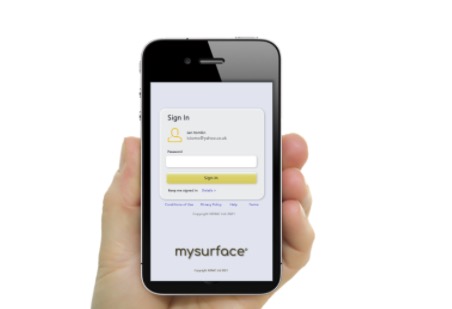
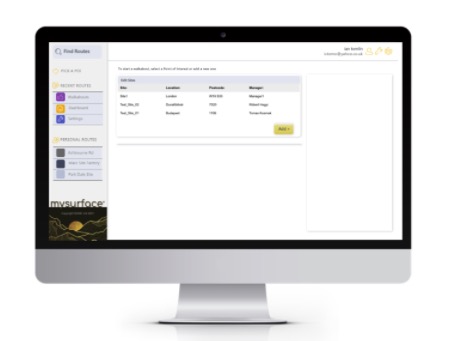
What makes no-code aPaaS different to what comes before is that at least 60% of the things you need to produce an Enterprise App come out of the box. It means the only things business Analysts need to get right are the drag and drop rules, if-then logic and workflows of the application they are building that are unique to the requirement. While No-Code applications development is fast, building apps on a No-Code Application Fabric is even faster.
People used to argue you needed a two-speed IT capability to make digital business work. That notion has thankfully gone away. No-code aPaaS returns IT influence from the outer fringes of the enterprise to the center.
That’s an awkward conversation in today’s boardrooms, but it’s arguably a necessary one.
Organizations that want to harness data, become data-driven, keep data safe, eradicate self-authored apps and spreadsheets, achieve excellence in customer experience, serve up the best applications for their stakeholders, and cut costs. History tells us that the best way to achieve it is to have a unified computing and data environment.

Data quality/integrity benefits include:
1. IT people used to coding will be resistant to change
2. Departmental heads may initially be resistant to the idea of sharing their data
3. Not every no-code aPaaS offers ALL the features you will need. So selecting the right platform with be important and isn’t always straightforward.

Ian Tomlin is a management consultant and strategist specializing in helping organizational leadership teams to grow by telling their story, designing and orchestrating their business models, and making conversation with customers and communities. He serves on the management team of Encanvas and works as a virtual CMO and board adviser for tech companies in Europe, America and Canada. He can be contacted via his LinkedIn profile or follow him on Twitter.
Now read:
At Encanvas we have a passion for low-code / no-code (we like to say codeless) software development. We’ve been leading innovation in the enterprise rapid applications development (low-code / no-code / data mashups) industry since 2002.
Our enterprise digital transformation platform is used to design, deploy and run custom apps by uniquely blending application (aPaaS), integration (iPaaS), Robotic Process Automation (RPA), and data mashup codeless software tools.
Encanvas brings agility and innovation to businesses. Used by data-driven organizations around the world, our platform evolves digitalization plans at the speed of light to maximize customer experience and minimize IT costs. Accelerate time to value of new applications as part of your digital transformation or data engineering program. Read the Encanvas Blog to learn more about what we do.

Using a no-code design platform, designers use visual building blocks, if/then rules and simple wizards to create user interfaces and applications logic. The design tool forms an abstraction layer. behind the scenes, the app is converting your beautiful design into bits and bytes – so you don’t have to. It means anyone with basic database or spreadsheet knowledge can become a citizen developer.

Enterprise computing practitioners were somewhat less thrilled by SaaS. Before its arrival, the role of the Enterprise CTO was unquestioned. They were the gods of technology, and nobody could get anything done in IT without their blessing.
The idea that departmental managers could arrive at the IT desk and start demanding software products they hadn’t even seen before, and show them immediate advantages was hard to counter, and left many IT heads on the back foot, trying to defend the common sense of requiring testing, integration and further validation before any recommendation was adopted.

The rise of SaaS adoption levels in the enterprise has soared over two decades, as department heads have got ever more involved in selection decisions on the tools they, and their teams, want to use. The power to make decisions drifted from the center of the enterprise to the margins.
Few could argue that the quality of applications used in business has benefited from SaaS. But at what cost?
Step into any large enterprise and you’ll encounter find the common problem of data held in various SaaS platforms with departmental managers pulling their hair out trying to gather it up to drive decisioning.
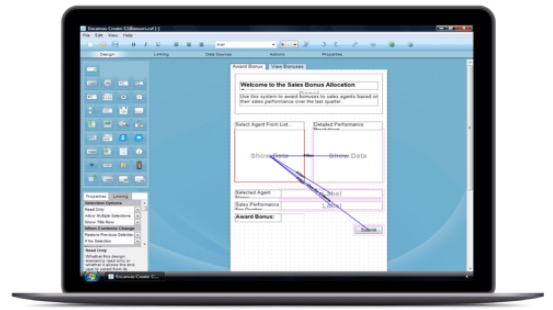
Businesses build custom apps using no-code platforms for lots of reasons. Step through the latest articles on app engineering and you’ll find the three main areas of no-code application development demand. They are:
Customers want to serve themselves. That means processes need to extend beyond the remit of a company website. To bind together front and back-office systems requires the development of new apps. Additionally, these apps need to be deployed on mobile, desktop and web form factors. They must interact with the incumbent systems and harvest data from across and beyond the enterprise.
Another major reason for the rise in no-code application development comes from the recognition that back-office systems need to be automated. Most businesses today rely on hard-copy documents and humans to some extent to fill in gaps between automated processes. Broken process steps and simple things like signatures are common culprits for offline process steps. Hyperautomation is about leveraging the latest crop of digital technologies—including blockchain, AI, big data, cloud computing, robotics and RPA, chatbots, the Internet of Things (and sensor networks), etc.—to automate processes at scale. To create the apps you’ll need, manual coding isn’t an option isn’t an option because it takes too long and costs too much. That’s why people are turning to no-code applications development.
The democratisation of artificial intelligence technology has led to a dramatic growth in the use of computers in decisioning that would previously have been left for humans to do. Most startups finding investment in Silicon Valley these days have an ‘AI’ aspect to their business models. Data analysis and decisioning form a major part of the digital transformations businesses are today considering to gain a competitive advantage on their rivals. All these aspects of enterprise IT fundamentally need no-code application development to speed their adoption.
Justify one no-code application development for any of the above categories, and you will find the opportunities for no-code app development don’t stop there.
Most businesses today, even will all of the great SaaS tools and business apps at their disposal, are underpinning a large proportion of their critical business processes with spreadsheet systems and self-authored apps that rest on the desktop and are largely invisible to IT.
Back in the day, that wasn’t really an issue—and everyone did it—but in an era where data security and privacy is everything, and customers want the transparency of operations to serve themselves 24/7, well, spreadsheets quite frankly don’t cut the mustard. The downside of SaaS is that it spreads your data across a wide number of data silos. This all means every company I know has a shopping list of new no-code developed apps they want to build to serve customers better, automate further and faster to cut costs, and to improve data use and value, through richer data analytics and decisioning.
Back in the day, that wasn’t really an issue—and everyone did it—but in an era where data security and privacy is everything, and customers want the transparency of operations to serve themselves 24/7, well, spreadsheets quite frankly don’t cut the mustard. The downside of SaaS is that it spreads your data across a wide number of data silos. This all means every company I know has a shopping list of new no-code developed apps they want to build to serve customers better, automate further and faster to cut costs, and to improve data use and value, through richer data analytics and decisioning.
Which all sounds great. In the real world of digital businesses today, no-code application developments extend beyond the expectation that only one app will be the outcome of that investment. Businesses need enterprise grade no-code platforms that support not just the design, but the roll-out and ongoing operational maintenance of custom no-code apps.The enterprise IT today is flooded with new ways to develop business applications using low-code or no-code tooling. This innovation in software engineering reduces or removes the need for coding and scripting when authoring apps. These tools help a non-technical (or less IT competent) user to build custom apps for themselves.
Secure&Live – A feature rich and data secure digital transformation platform. Secure and Live is a codeless Enterprise applications Platform-as-a-Service (aPaaS), built to turn business models and strategies into apps.
GlueWare – Enterprise iPaaS for bringing your data together, mashing it up, and bridging between your eCommerce store and back-office, streamlining processes for maximum results.
AppFabric – Build as many apps as you need using an agile codeless SDLC approach and change them as often as you like.
Live Wireframe – Design and publish ebooks, courseware and apps, then go live in two clicks!
CDP – Codeless Customer Data Platform to create a single view of your customer data. Use our data integration tools to harvest insights from across your enterprise and beyond.

Learn about the data safeguarding, features , integration tooling and modules of Encanvas that make it a leader in codeless enterprise aPaaS
Every good no-code applications designer knows that the best results come from an engaged stakeholder group able to articulate how an app should work.
The design process today needs to allow business people and app stakeholders to get hands-on in the app development. This means removing the code from design screens, because normal human-beings that chose not to take Computing as their primary choice in college, don’t fair well when code is presented on a screen. It’s an instant put-off.
For this reason, no-code software platforms are taking off in popularity. Not only do they produce faster results, but generally the quality of apps they produce is as better fit to business needs.
At some point, no-matter who authors an app, it needs to be handed over to the IT guys for it to be properly maintained and managed.
In the world of computing today, data security and privacy are foremost in the minds of leaders responsible for business continuity and keeping the lights on.
This means self-authored apps using no-code must co-exist with systems of record (like ERP and financial systems) as part of a joined up enterprise digital platform.
It also means, IT admins and architects need their own robust and easy to administer toolsets to manage the roll-out and governance of apps developed by the business.

Guide to Digital Transformation
Guide to Hyper Automation
Guide to Digital Ideation
Guide to Customer Data Platforms
Guide to No-Code Platforms
In Germany, most companies have what we’d describe as an ‘Organization Department.’ This is a team of people committed to the continuous improvement of organizational designs, behaviors, systems, processes, compliance, workforce incentivization, and data governance.
If you want to really maximize the potential of your data and the operational effectiveness of your business, applications development should not be seen as a one-time-only ad hoc event, but an integral part of continuous organizational improvement. That means building your tech tools into the improvement team of your organization, how so ever that manifests itself.

Ian Tomlin is a management consultant and strategist specializing in helping organizational leadership teams to grow by telling their story, designing and orchestrating their business models, and making conversation with customers and communities. He serves on the management team of Encanvas and works as a virtual CMO and board adviser for tech companies in Europe, America and Canada. He can be contacted via his LinkedIn profile or follow him on Twitter.
Now read:

With codeless enterprise software development platforms like Encanvas, it only takes ONE business analyst to take an app from concept to deployment. When a scrum of one becomes pointless, how do firms adapt their methods for modern software development?
At one time, companies would buy an IBM AS/400 computer and a bundle of software. They would expect to find everything in the box to run their enterprise. Not today. Enterprise computing has become fragmented, complex, and more virtualized. Even with all the latest tech tools, it’s not enough to serve up the software applications they need.
This has led to enormous growth in demand for functional and task-specific Software-as-a-Service (SaaS) solutions. So-called ‘SaaS sprawl’ accounts for a growing proportion of technology spend, with the average company now relying on over 200 unique SaaS apps.
The average number of SaaS apps used by businesses has been steadily rising. In 2020, it was around 80, and by 2022, it jumped to an average of 130.
The biggest losers in the adoption of SaaS are data-driven businesses. Adoption of SaaS tools creates tens, if not hundreds, of discrete data repositories with each operating a data model designed by a vendor. Harnessing this data becomes a nightmare for departmental and business leaders who find themselves running blind on business-critical decisions.

Faced with the need to originate high-quality real-time enterprise data insights, companies have resorted to creating in-house development teams; their ambition to become innovation factories in their own right. Software Development Life-Cycles (SDLC) have changed.
Today, the state of the art in web development software is codeless agile. In concept, codeless agile differs from traditional waterfall software development projects by encouraging cooperation between developers through daily dev team stand-ups and scrums. In this ‘must do it well and fast’ world of app development, digital leaders have encouraged the use of fewer, more capable tools—with many adopting cloud platforms with built-in tooling to assist rapid application development, deployment, scaling, containerization, security, and such like.
But that innovation in methods and tools still doesn’t cut the mustard.
For most application developments, additional layers of data aggregation and business intelligence tooling to make sense of the data squirting out of the myriad of apps used across the enterprise. And the trusty spreadsheet is hanging on for dear life to retain its stature as the accountant’s friend, and the first and last port of call when professional SaaS apps aren’t still numerous enough to solve the many and varied data processing problems of users and teams.
Cloud delivered software development tooling is more holistic and comprehensive in its design than the desktop tools that preceded it. Industry watchers have seen the enterprise software development industry transition from Rapid Applications Development (RAD), to Low-Code, to No-Code in less than a decade.
Today, cloud-delivered codeless web development platforms like Encanvas are fast becoming the state of the art. They remove the visibility of software code and script from the app design interface which means businesspeople can be directly involved in the applications development process, to steer priorities, and quickly identify shortfalls in User Experience (essential in a world that priorities customer experience above practically any other competitive strength).

The use of No-Code development tools has presented organizations with the means to re-think their designs to foster dedicated change teams.
Gartner calls these new development organizational structures as ‘Fusion Teams.’ These new ad-hoc structures in organization design appear as and when a new application development is needed; bringing together business stakeholders, change professionals, security experts, and business analysts together to create a solution for the new requirement. Once the solution is delivered, ‘the team’ dissolves.
In the context of a Fusion Team, the entire software development team (as was ‘the scrum’ in the previous team design model) is represented by a single Business Analyst, who, with the support of an IT architect, is empowered to take an app concept to delivery using No-Code tools and plug-in technologies.
Such a fundamental change in operational behaviors dictates that project management processes keep up. Fusion Teams today are experimenting with new approaches to project management, like Agile Codeless that have been purposely engineered to keep up with the development cadence of Fusion Teams and No-Code app development, that today are creating apps in days and weeks that would’ve taken months and years only a few years ago.
What makes this transition possible is Enterprise Applications Fabric technology. An Applications Fabric (AppFabric) is a cloud Platform-as-a-Service (PaaS) equipped to design, deploy and run countless software bots and applications. It facilities the replication, scaling and operational performance management of published applications, while managing their life-cycle from birth to death. Using an AppFabric, it is left to the IT team to frame the fundamental user experience design rules, together with end-point security, core data tables, etc. This means Business Analysts operate within a suitably constrained and monitored ‘creative bubble’ determined by the IT experts of the enterprise.
This new approach to enterprise applications developments offers organizations the means to engineer their own built-to-fit digital ecosystem, without having to rely on spreadsheets and third-party SaaS tools, or the need to glue data together afterward. Fundamentally, all apps created in an Application Fabric bring data together in a single place, allowing organizations to fully leverage and re-use their accessible data.

Author
Ian Tomlin is a marketer, entrepreneur, business leader and management consultant. His passion is to help make great ideas happen. Relentlessly optimistic about the potential of technology for good, Ian’s 30+ year career has focused around the intersect of strategy, technology and marketing. He writes on subjects including enterprise computing and organizational design. He also works as a consultant and advisor to the executive teams of PrinSIX Technologies, Answer Pay and INTNT.AI, helping to rethink their marketing in order to tell their brand story.
Ian has founded a series of successful businesses including NDMC Ltd (2003), Encanvas (2006), and Newton Day Ltd (2019). He has written books, articles and guides on brand, digital transformation, enterprise applications, data science, workforce management, and organizational design. He can be reached via LinkedIn or Twitter.
Now read:

Codeless web development software removes the need for manual coding of software apps and, in doing so, cuts the time and cost of software development by as much as 60%.
Codeless software is a short-form term to describe a software development approach that removes the visibility of software code from screens when programming software applications. An abstraction layer is used to create applications logic, data structures and forms using software wizards and building blocks. While No-Code platforms allow software developers to quickly build applications by a simple drag-and-drop tool, codeless software goes a step further by eradicating visibility of software code in the software development and publishing journey.
This new form of rapid application development software is today frequently used in web development and enterprise computing. Normally, Low Code and No-Code app development platforms used for codeless authoring are deployed on a cloud computing environment. They help organizations to bring new software applications to market faster, and at a lower cost.
Examples of codeless web deveopment screens (copyright Encanvas 2022). Note the absence of any visible code.
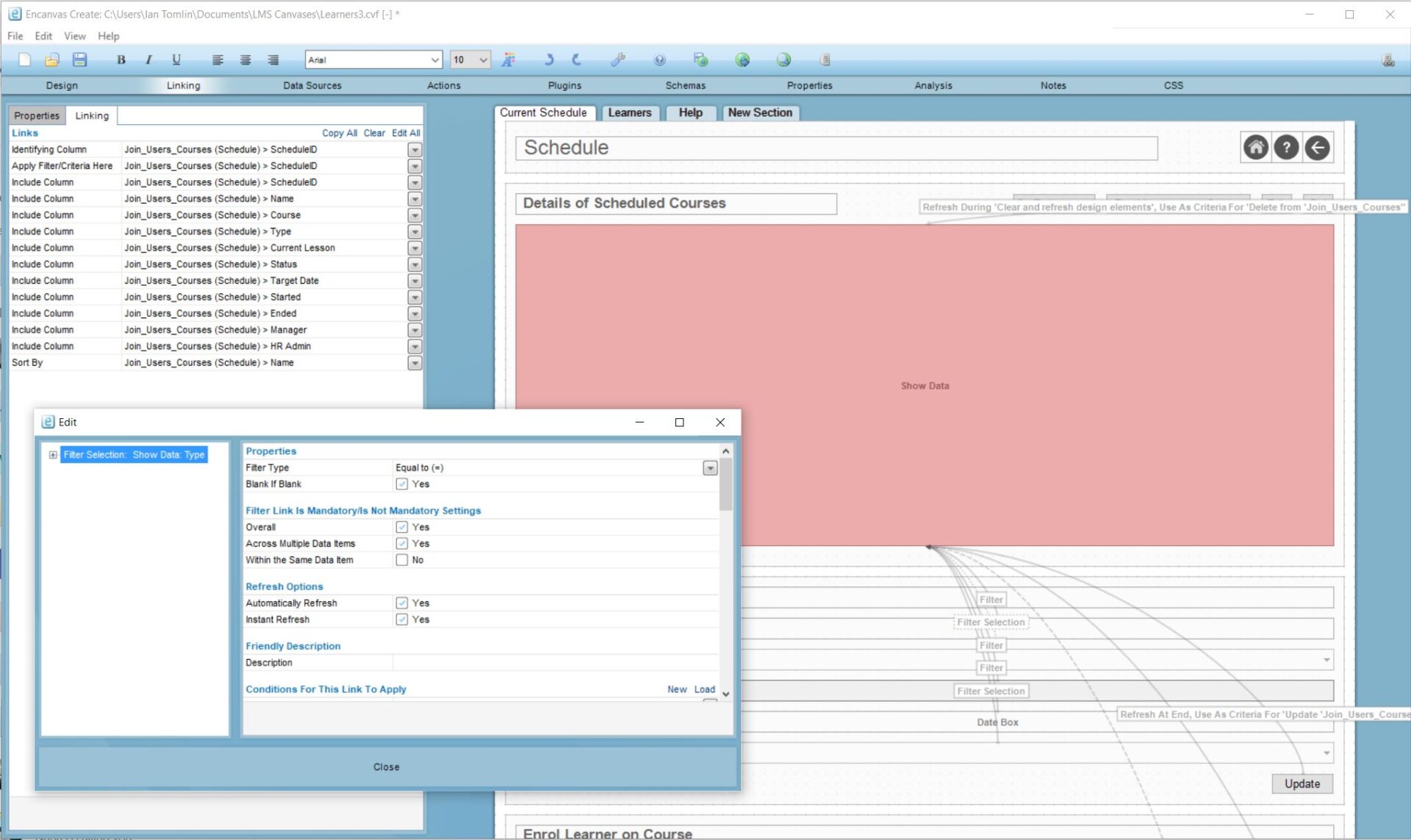
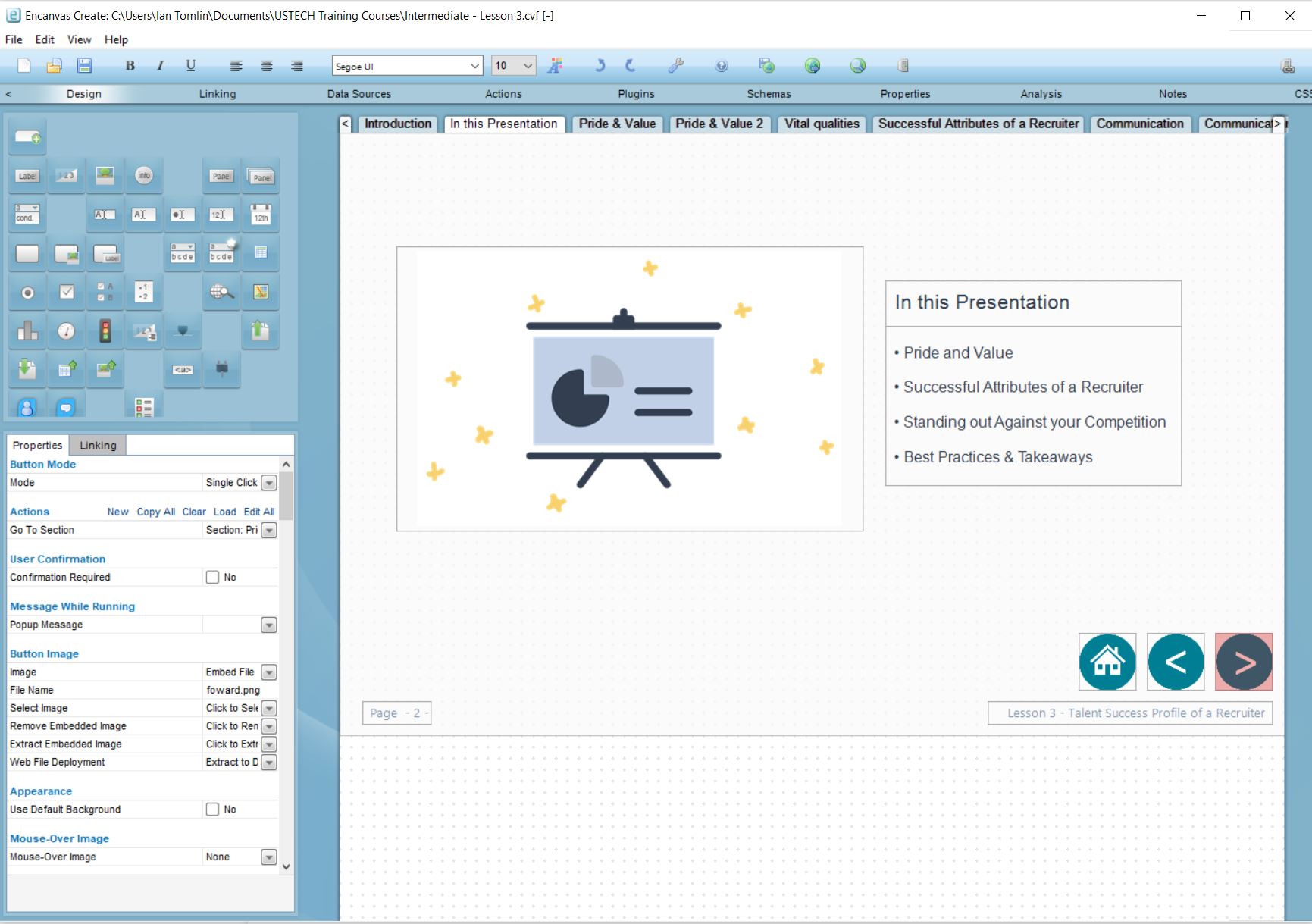
Markets have always been competitive, but with the progressive rise of digital business and the globalization of markets, the very structure of markets is changing too. It means that organizations must find faster and smarter ways to adapt their enterprise computing platforms to maximize customer value and minimize spend. It’s not just people and processes, but technology too is having to adapt faster and more often to change.
This means traditional IT platforms are being displaced by Low Code or Codeless enterprise software application platforms that are designed to adapt to change constantly, and offer productivity enabling tooling to serve the needs of change managers orchestrating change.
At one time, an organizational change was a rare thing. Business models rarely altered and the structure of organizations – i.e. how organizational structures were designed and resourced – had no need to change. Once people were assigned roles in the organization, they rarely moved beyond their role or department. Not today. The business models organizations operate are changing frequently and rapidly.
This is because, in a digital age, the structure of markets and the nature of competition. Many new forms of competition emerge from beyond the traditional players in any given market. We are seeing retailers selling holidays, telecoms contracts and financial services products, utilities and automotive manufacturers selling data and online retailers selling everything! In such a tumultuous market for products and services, suppliers have to respond to change faster. This means organizations are facing near constant organizational restructuring.
Markets have always been competitive, but with the progressive rise of digital business and the globalization of markets, the very structure of markets is changing too. It means that organizations must find faster and smarter ways to adapt their enterprise computing platforms to maximize customer value and minimize spend. It’s not just people and processes, but technology too is having to adapt faster and more often to change.
This means traditional IT platforms are being displaced by Low Code or Codeless enterprise software application platforms that are designed to adapt to change constantly, and offer productivity enabling tooling to serve the needs of change managers orchestrating change.
Codeless software development is a major breakthrough in the evolution of enterprise computing because, until its arrival, enterprise-grade applications were largely created by expert software development teams in back-offices, working ‘offline’ as opposed to developments carried out in near-real-time in workshops.
Evidence shows that users and stakeholders of applications are very much put off by the visual presence of code and script on computer screens as it’s a language they simply don’t understand. In consequence, they feel isolated and unqualified to present their case for enhancements to applications designs during review meetings; some claiming they feel awkward presenting ideas for improvements because of concerns over the amount of extra work they might be placing on IT colleagues.
Codeless web development software is sponsoring a new talent market, as non IT professionals can enter into a career of developing professional applications.
Examples of mobile and web desktop applications developed using codeless programming


The last decade has seen the gradual erosion of centralized IT power in technology selection and decision making. This is partly because departmental leaders have grown more confident in their appreciation of technology and its potential to automate their processes. It is also because read-to-deploy Business Intelligence, Software-as-a-Service (SaaS) applications and robotic process automation (RPA) tools have made it possible for departmental managers to request software tooling that instantly works to address task fulfilment challenges.
During the period, the term ‘citizen developer’ has arrived in enterprise software development vernacular. A Citizen Developer is someone who wants to author an application but lacks IT expertise (particularly coding or scripting) and tools. A wave of Low-Code and Codeless software applications have evolve to aid citizen developers in their quest to use software applications to solve their individual or team productivity challenges.
Codeless web development software platforms equip citizen developers with the tools they need to design applications without coding or scripting, to then deploy apps using one-click deployment methods.
This latest genre of technology raises the bar on what can be achieved by citizen developers. Toolkits enable non-programmers to build complete end-to-end business applications, deploy them, and manage them. This means enterprise-grade apps can be designed and deployed by non-IT people without compromizing IT governance and security.
For some individuals, citizen development codeless software offers the potential of a new career by offering services to businesses through task portals live Fiverr and TopTemp to build apps without coding.
Codeless software has endured a challenging evolution to gain credibility for being useful and professional. In this section, we look at the pro’s and con’s of adopting codeless app development methods.

Sited benefits of using Codeless applications development platforms include:
Adoption of Low-Code and Codeless applications development software used to be seen as a high-risk venture. IT teams were concerned about a loss of influence, control and governance over deployed systems. Fortunately, modern enterprise applications software platforms carefully balance the needs of citizen developers with the expectations of IT teams, so everyone gains. Deployed applications bring MORE INFLUENCE, CONTROL AND GOVERNANCE to IT teams, not less. This is because:
• They are able to respond to the long-tail of demand from departments for new situational applications; removing calls for two-speed IT solutions and dedicated ‘rapid development’ DevOps teams.
• Use of ‘enterprise-grade’ applications development tools removes the existence of self-authored applications such as spreadsheets (so-called ‘shadow systems’ because their existence is unknown to IT teams).
• Furthermore, it means any created data becomes visible to IT and data security governance professionals rather than being held by users on local hard-drives (so-called ‘shadow data’).

Ian Tomlin is a management consultant and strategist specializing in helping organizational leadership teams to grow by telling their story, designing and orchestrating their business models, and making conversation with customers and communities. He serves on the management team of Encanvas and works as a virtual CMO and board adviser for tech companies in Europe, America and Canada. He can be contacted via his LinkedIn profile or follow him on Twitter.
Now read:

I write a fair few business books on or around the subject of enterprise IT, but rarely do I make predictions. Being English, I’m naturally cautious. But I think this year we will start to see the first shoots of a codeless enterprise software future, where robots and wizards take over from humans on the majority of enterprise software developments.
It’s strange to think how things have changed in the enterprise computing industry over time and to reflect on those moments when hype curves finally kicked-off, or disappeared without a fizz and bang, like flat party balloons. That said, I’m pretty confident about the impact of this one, and the fact it will happen very soon.
Examine past predictions and it’s apparent that humans aren’t very good at predicting the future of enterprise tech. Many of us still remember the ‘millennium bug’ panic that happened at the turn of the century with many IT pundits expecting hundreds of computers to simply stop working at the gong of Big Ben at midnight.
But the impact? It led to lots of IT leaders holding their breath when the moment came, and plenty of overtime in IT departments, nothing more.
Examples of mobile and web desktop apps designed and deployed on codeless enterprise software


Agility became the subject of my first book – Agilization – that I started writing in 2002 after a couple of years of management consulting in Europe. I was consulting for large corporations and their inflexibility in IT, methods, and organizational structures was crippling their growth. I became ever more convinced agility was something people talked about but didn’t know how to turn into a sustainable attribute of culture and behavior.
In all this, the biggest challenge they faced was the intransigence of departmental and IT leaders prepared to consider a new way of working. Back then, practically everything in the business was hard-coded.
Exec teams saw their organization chart as a true reflection of their organizational design, they were buying ERP systems that were a blueprint design that every other competitor was also adopting. The idea of agile workforces, agile IT, agile business models seemed ‘out there.’
Since the COVID-19 pandemic, we’ve seen agile organizations come to the fore and pounce on the market changes that have happened.

This decade, I predict we will finally see Codeless enterprise software take center stage in enterprise computing. It will have a more profound impact on the IT world than most commentators forecast. The IT industry has been trying to remove coding from the list of necessary skills to create apps since the millennium.
It began with Enterprise Mashups leading the charge. Gartner predicted these tools would fill the void between inflexible ERP systems and business model orchestrations, serving the long-tail of demands for apps that could be used by individuals, teams and departments to get jobs done.
Within a couple of years, Enterprise Mashups got redefined as Situational Applications solutions.
Then, the enterprise IT audience got bored. But now, pretty much the same group of entrepreneurs that started building application platforms to remove coding from application design, deployment and operations have resurfaced as application Platform as a Service (aPaaS), High Productivity applications Platform as a Service (HPaPaaS) and yes, Robotic Process Automation (RPA) brands.
I believe this decade, this time around, Codeless enterprise software platforms are going to hit their mark for three very good reasons:
1. Digital transformation pressures
Digital transformation agendas sparked by new digital technologies and the rapid pace of Business model changes is increasing demands for adaptive apps platforms that reduce the time to market, costs and risks of producing and managing apps.
2. Data security
Data security threats mean companies can no longer tolerate spreadsheet apps, self-authored apps that IT can’t govern, and the existence of shadow data means that spreadsheets are no longer a sustainable answer to citizen developer requests.
3. Tooling
With advances in AI emerging every day, the tooling for low-code and no-code development is getting seismically easier to use and with integration Platform as a Service (iPaaS) technology innovations. Technologies like Encanvas’s hyperdrive plugin permit the use of third-party DLLs, code, script, data sources, etc., there’s no limit to the type or scale of applications businesses can design for themselves.
4. COVID-19
I think COVID-19 has increased pressures on IT solutions to be more agile, and faster to develop. There is a pent-up demand now to build and adapt enterprise apps on a scale, and at a pace, that we’ve never seen before.
The notion that software development teams will sit down in scrums and start coding new apps in agile scrums seems truly outmoded by codeless. New codeless platforms offer MUCH MORE rapid development and integration (with almost no testing overhead). And, thanks to the use of robots and wizards in the software development process, it’s now possible to displace the need of human coders to write the majority of code.
COVID-19, then, might well represent the death-nail in what is now exposing itself as an ageing industry built around human coding of applications.

Ian Tomlin is a management consultant and strategist specializing in helping organizational leadership teams to grow by telling their story, designing and orchestrating their business models, and making conversation with customers and communities. He serves on the management team of Encanvas and works as a virtual CMO and board adviser for tech companies in Europe, America and Canada. He can be contacted via his LinkedIn profile or follow him on Twitter.
Now read:

What Does the Future Hold for No-Code App Development?
Written by Ian C. Tomlin | 12th January 2024
2023 saw a significant boost in the popularity of No-Code platforms, as many businesses concluded the best way to grow out of an economic downturn (resulting from the pandemic) was to innovate. Will 2024 be the year that no-code application development takes hold? If so, what innovations can enterprise buyers expect from state-of-the-art platforms like Encanvas? Read this article to find out.
Few people involved in the enterprise applications development market would be unaware of the strong bias towards manual coding. The industry has been run by people who themselves trained as coders. These individuals have invested in coding. No question, coding offers unlimited versatility while any form of abstraction layer will inevitably lead to inflexibilities. These inflexibilities come in the form of functionality shortcomings built into apps, or in the ongoing platform architecture—making it more difficult to protect data, integrate with other systems, scale apps or manage User and Group permissions.
This has led some IT leadership teams to focus their cultures and behaviors around coding. When this happens it inhibits speed-to-market and business outcomes. It is assumed, through this professional bias, that any product claiming to be able to produce enterprise apps without coding is intended for ‘citizen developers’—which these days has become industry-speak for ‘amateur.
The great thing about working with teams of awesomely clever and passionate people wanting to solve a problem, is they don’t see things like ‘bias’ as being an insurmountable obstacle; but rather just another bridge to cross.

When Encanvas deployed its first enterprise platform for a top 5 professional services company back in 2002, it proved that a no-code appdev platform could do something coder couldn’t. And, in 2003, when it produced a system to manage Advanced Roadworks Plans for a community of over a hundred organizations digging up roads across Greater London, it proved that No-Code can handle ultra-complex enterprise IT challenges better than coded solutions.
The challenge has been to convince a profession whose holy grail is the manual creation of code, that there is a better way of producing enterprise apps. Thankfully, enterprise projects to create apps have grown in volumes exponentially because of the potential of digital technologies to offer significant cost savings and customer service improvements. Speed-to-market of new applications has led to a drive for smarter ways of building apps. Every business has become an innovation factory. In 2021, more enterprise buyers than ever started to explore the possibilities of no-code.
Most No-Code solutions start their life by making it simpler to develop basic forms-based applications. Almost any enterprise app born in the early 2000s required humans to enter data into it. Understandably, the numeracy of department-level forms-based apps has created a demand for rapidly deployed, ‘designed-to-fit’ solutions. This requirement has shaped the feature sets of No-Code tools. Features to expect include:
To be awarded ‘Best No-Code Platform 2022’ solutions need to reduce or remove the amount of mundane coding tasks needed to author and deploy forms-based apps. Early solutions weren’t much different to DataEase or Microsoft Access (if you remember these popular self-authoring tools of the 1990s). Typical design elements included text, text area, numeric, date-box fields (etc.) and presentation building blocks like tables and charts.
Tools had to offer simple user journeys to intuitively guide developers through the stages of app design and deployment, including ‘one-click publishing.’ Few people are prepared to read user manuals anymore, so if Users can’t work out how to work with a tool without referring to a user manual, it won’t be popular with modern tech buyers.
A big ‘digital tech’ shot in there arm for No-Code platform vendors has been the evolution of cloud platforms like Amazon EC2 and Microsoft Azure. Large tech vendors have invested billions of dollars into their cloud infrastructures and middleware tools over the past two decades. No-Code platforms are able to harness these capabilities to make it easier to integrate, secure and scale applications; both in their audience size and number. Much of the ‘heavy lifting’ for the back-office IT tasks is ultimately being performed by the cloud infrastructure supplied by one of the top 5 cloud vendors.

The demand to speed up the time-to-value of apps has led organizations to create Development Operations (DevOps) teams. These IT teams use agile scrum development methods to fast-track app developments. While operational innovations in DevOps teams and agile have revolutionized the pace of app development, they still gravitate towards coding and coders; which means they still don’t quite remove the barriers between IT and the business. Business bosses remain hungry for FASTER, CHEAPER applications development. This leads to a move towards ‘Fusion Teams’ that fuse IT and Business People together in workshop-oriented app development teams.
According to the latest thinking by Gartner, DevOps teams are about to get displaced in the enterprise by FUSION teams. They say, “Many firms pursuing distributed delivery are transitioning to “fusion teams” to bring together IT and business employees to develop digital solutions. As fusion teams become more prevalent, enterprise architecture and technology innovation leaders must actively support these blended, multidisciplinary teams.”
Fusion teams equipped with No-Code software—such as Encanvas, Mendix, OutSystems, BettyBlocks, etc.—encourage open discussions between the people who know what an app needs to do, and the Business Analysts (not coders) responsible for authoring the app solution. This results in better-fit apps, built faster.
While Low-Code tools reduce the amount of coding that needs to be done when creating apps, No-Code solutions remove code from the screen when apps are being developed. Coding is displaced by an abstraction later of ‘LegoTM’ styled building blocks that are designed to serve the various demands expected of the design element. For example, ‘Buttons’ can perform layer-upon-layer of actions to update data, check values, automate email workflows and escalations, etc.
Of course, when you only need one person to build an app, there’s no point having a SCRUM for one. This means Agile Development methods and tools are also having to adapt to this new reality. Additionally, you can expect No-Code platforms to offer an Asset Library to manage assets and re-usable components. Tools like Jira and GitHub used by coders to manage code blocks in a traditional manual coding ecosystem are no longer needed. Instead, simpler ideation and project management tools are used to track progress of what are essentially much simpler and shorter projects, involving far fewer people.

Here are a few pointers to some of the latest innovations in enterprise No-Code platforms:
It’s no longer necessary for the people designing and deploying apps to be in the same room. The pandemic of 2020 has encouraged the evolution of remote development tooling into No-Code platforms.
Encanvas, for example, supports an encrypted Passport system for its remotes designers and architects to make access to the platform simple for users, whilst improving platform security compared to applications using two-factor authentication (which presents the risk of someone stealing a Users’s smartphone). Using Passports, designers can safely build apps online with business stakeholders on Zoom, in a Google Huddle, or on Microsoft Teams. No data gets saved to the local devices and no enterprise data connections are exposed.
We can imagine 2024 as being the year that artificial intelligence starts writing code, perhaps not as much as humans to begin with, but we can imagine it will get there! Already, Google’s Gemini is getting pretty nifty at supplying ready-to-use CSS scripts that take the load off of developers. While fully coding applications may be a while off, we can imagine systems adopting AI tools to allow users to specify their requirements in a more transferrable and adoptable form.
One of the main reasons why enterprise projects fail is the quality of data or the inability to harvest and blend data. The latest innovations in No-Code platforms go a step further with integrated No-Code tooling to mash up data from multiple sources and provide rich back-office software robots to orchestrate data uploads securely. These built-in No-Code features mean organizations no longer need to invest in third-party data integration or Extract-Transform-Load middleware.
The big new phrase in the digital transformation industry is Hyper-Automation; or the ability to apply best-fit Digital Technology solutions to process improvements without incurring high frictional costs. Enterprise No-Code platforms are now able to plug in third-party AI algorithms, Maps, DLLs, code, script, blockchain, data visualizations, social messaging tools, etc. to make it simpler for companies to embed tech innovations into business processes without having to find third-party tools.

DIGITAL DOCUMENTS REMASTERED
Micro-Portals • Forms • Reports • Training Dashboards • Charts • Maps • Tables Checklists • Onboarding • Risk Registers • Presentations • eBooks
The last decade has seen tools evolve for coders and non-coders. With the advent of Fusion Teams, No-Code platform vendors like Encanvas are now producing tooling to serve both audiences; namely, No-Code applications development tools for fusion teams underpinned by a No-Code cloud ecosystem for IT people to use so they can create data integrations, serve up an AppFabric, manage deployments, scaling, data security and User permissions.
Could this be the final step in the evolution of applications engineering; taking it from manual coding to codeless applications design and deployment? Probably not, but it will give business and IT leaders something to think about in 2024.